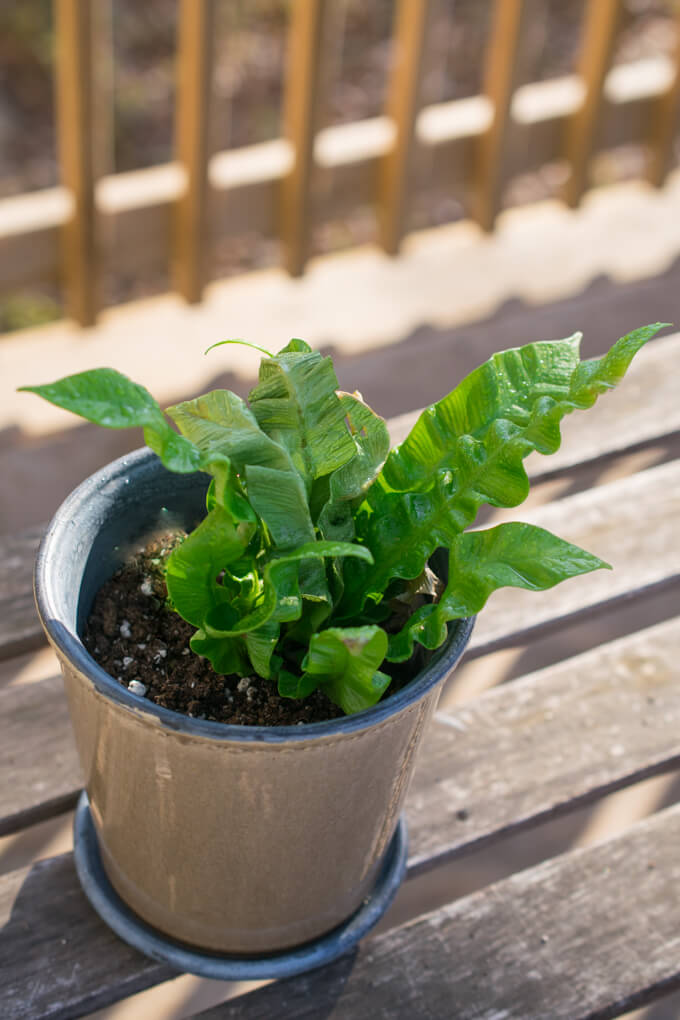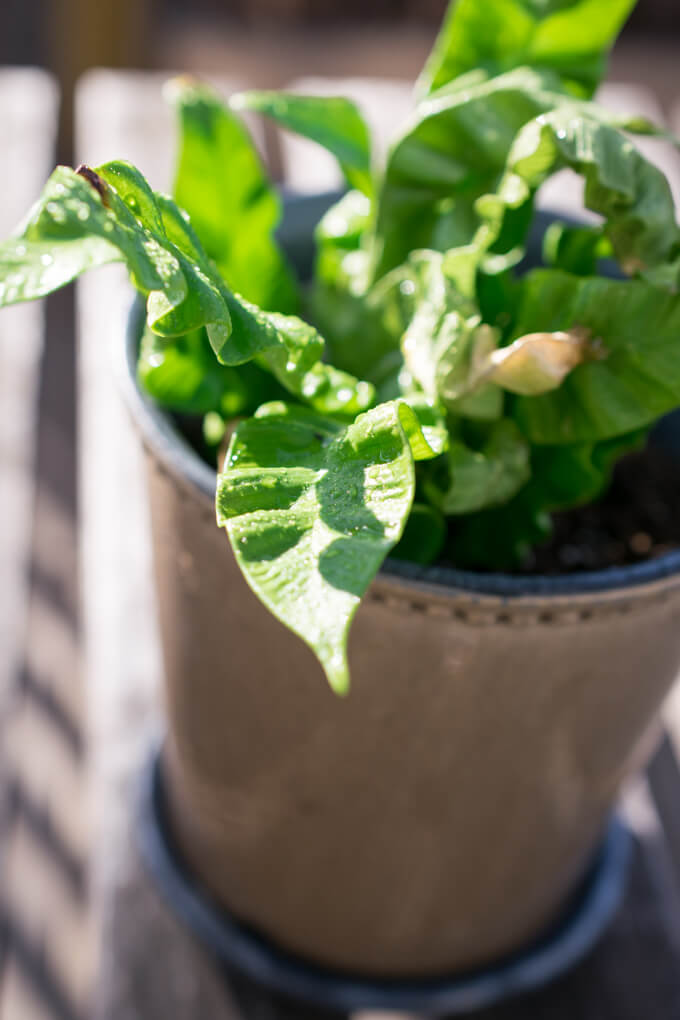A plant that I’ve been getting to know more recently is the crispy wave plant, which is a type of asplenium fern. Another fern in this same family is the spleenwort! Cool name. My crispy wave plant was an impulse buy at the garden store. The label claimed that it was easy to care for and would thrive under a range of conditions. So, color me surprised when my crispy wave fern struggled from the beginning! Luckily, I was able to right the ship, and I’d like to share my tips here for others who have issues with their plant too.
The crispy wave is notorious for its air purifying abilities, which are thought to be due to the rippled texture of the fern fronds giving it a greater surface area with which to filter carbon dioxide into oxygen. [1]
Crispy wave lighting
Out in nature, asplenium ferns typically grow in wooded areas where direct sunlight doesn’t reach them very much. When I first bought my crispy wave plant, I placed it in a south-facing window that gets quite a bit of light. After I moved it to a north-facing window, which is additionally shaded by a large tree in my front yard, it began to look a lot more healthy. Too much light will burn the crispy wave’s leaves.
Crispy wave soil
You’ll want to avoid potting your crispy wave plant in typical soil. The roots of this type of plant require moderate to high aeration, so a very porous specialty soil is preferred to encourage root growth. Crispy waves’ roots will grow to an impressive extent to fit the pot that you plant them in, and those roots need love. I repotted my plant when I bought it, but I used the same soil the plant came with, plus I added a mix of regular soil with perlite.
Crispy wave moisture and watering
When I think of wooded areas like where crispy wave plants and their relatives grow in the wild, I think moisture. This was the biggest factor in why my crispy wave was initially struggling and why it is now THRIVING!
An evenly moist, humid environment is necessary for asplenium ferns to be happy. However, you also don’t want to drown the roots, so you’ll want to water this plant frequently and lightly, keeping the soil just barely moist.
Another really important thing to consider about moisture? Your home’s heating and cooling system. I live in a typical Baltimore home. While the summers here are unpleasantly humid for humans, they’re about perfect for a crispy wave fern.
However, winter is a different story, because like most other houses here, I have a forced air heating system. Forced air heating systems are notorious for drying out the ambient environment in a home. What does this mean for my crispy wave plant? It starts to dry out too. So, anytime it’s cold enough outside that my heating system is running, so from about November through March/April, I mist the leaves once or twice daily.
A lot of your other house plants might enjoy misting during winter if you have forced air heating, although perhaps not as frequently as the crispy wave does. I have a plant mister that looks a lot like this one. Once I started misting my crispy wave, it was amazing how quickly it would absorb the water and dry out again, but also how much greener and healthier it looked.
Crispy wave drooping leaves
When ferns are grown in a mass setting like at a garden center, they may grow more upright to reach the light. In your relaxed home environment, your crispy wave may appear to “droop” in that the leaves start to point more sideways than upright. However, this is normal unless the leaves are also limp, or dried out and browned! Sideways spread is not necessarily a sign of poor health on its own.
A few brown spots here and there is also completely normal! If you notice any fronds that are completely brown or dead, carefully trim them off at the base of the fern. This helps free up the plant’s resources for new growth.
Sources consulted
[1] NASA: Interior Landscape Plants for Indoor Air Pollution Abatement






 I'm Shannon, the writer and photographer of Yup, it's Vegan! I'm a morning person based in Baltimore, USA. My mission is to create healthy plant-based recipes that anyone would enjoy, using seasonal produce with inspiration from global flavors.
I'm Shannon, the writer and photographer of Yup, it's Vegan! I'm a morning person based in Baltimore, USA. My mission is to create healthy plant-based recipes that anyone would enjoy, using seasonal produce with inspiration from global flavors.






